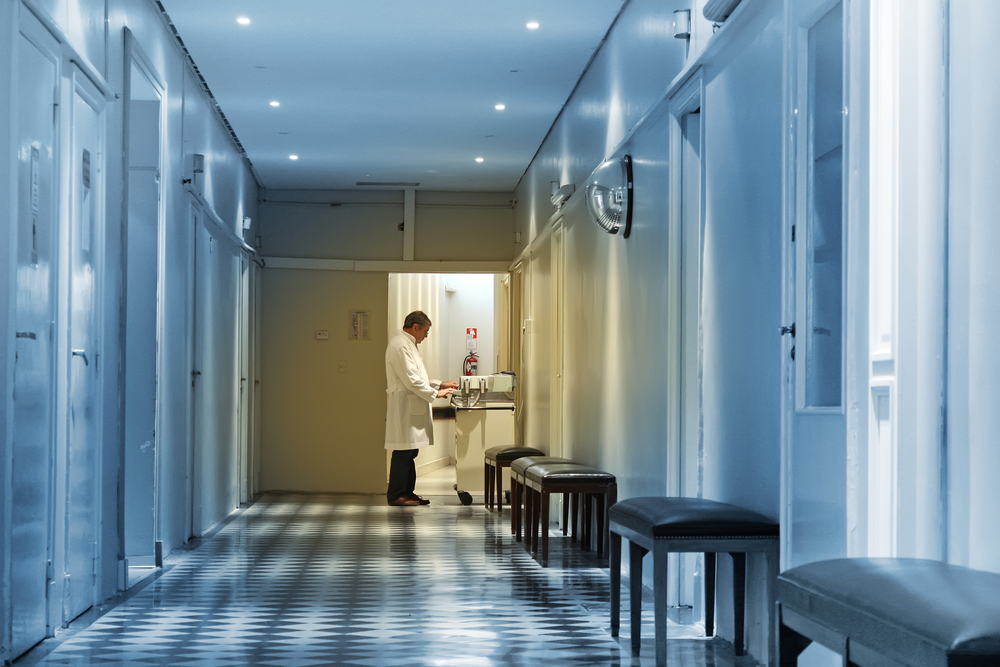Why Power Is So Tricky for Hospitals During Hurricanes

When hospitals lose power — as was the case for two New York hospitals due to Hurricane Sandy — the lives of critically ill patients are at risk. But such emergency situations can be difficult to prevent in the face of stretched budgets, space limitations and the wrath of Mother Nature, experts say.
Over the last decade, hospitals have become better prepared for disasters such as hurricanes and flooding, said Dr. James Augustine, an emergency physician at Mercy Hospital Anderson in Cincinnati.
In 2001, Tropical Storm Allison caused major flooding in hospitals in Houston, and many lost power when their generators — located in the basement — were damaged, Augustine said. That experience led to newer hospitals in flood-prone areas placing their generators on higher levels, or on the roof.
But most hospitals built before 2001 still have generators in the basement, said Paul Richter, the emergency management coordinator at South Carolina Hospital Association. This was the case for the New York University Langone Medical Center, which lost power in Hurricane Sandy, as well as hospitals in New Orleans during Hurricane Katrina. The NYU hospital had just one generator in the basement and seven on upper levels, with tanks of fuel located underground as required by buildling codes, according to a university spokesperson. However, some of the circuitry governing the flow of electricity to portions of the hospital was located in the basement.
Retrofitting older hospitals to add a generator on the roof costs millions of dollars, Richter said. "A lot of them just don’t have the funds to do that," Richter said.
In addition, while a roof generator in theory sounds like a good idea, it's not certain whether generators tacked on in this way can withstand hurricane-force winds, Richter said. Even more, if the device that pumps fuel to the generator is located in the basement, as it was for New York City's Bellevue Hospital, which lost power due to Sandy, the generator can be rendered useless in a storm.
"It's hard to test something when it's installed unless there's an actual hurricane," Richter said. "You can only test it in a lab somewhere," he said. Richter said that to his knowledge, such testing of roof generators has not been done.
Sign up for the Live Science daily newsletter now
Get the world’s most fascinating discoveries delivered straight to your inbox.
The size and weight of a generator large enough to power an entire hospital can also be an issue in terms of putting it on the roof, Richter said. As a compromise, one hospital in South Carolina is considering putting a smaller generator on the roof that will power a subset of rooms that house very critical patients who rely on electric-powered medical equipment for survival, Richter said.
The space needed to store fuel for the generators, as well as the logistics required to get the fuel to the generators is also a problem for hospitals, Richter said
Sometimes, the strength of a natural disaster can overcome even good planning. In Joplin, Mo., a hospital put its generators on ground level in an adjacent building, anchored to a concrete pad. During a tornado last year, the generators were sucked out of their location, Richter said. "Mother Nature just is too strong in some circumstances," he said.
Augustine agreed, saying, "There's no completely safe place for hospitals to put their generators."
It's also the case that different parts of the country are better prepared for certain types of disasters than others. Unexpected events for a particular region can mean the systems in place to deal with those types of disasters become outdated, said Dr. Joseph Nates, deputy chair of the Department of Critical Care at the University of Texas MD Anderson Cancer Center in Houston.
"Unfortunately, when you are expecting a flood and then you have an earthquake, you can be thrown off your game," Nates said. "You can be surprised, unfortunately," Nates said.
Pass it on: Even with backup generators, power outages in hospitals during natural disasters can be difficult to prevent.
Editor's note: This article was updated on Nov. 8 to include new information about the location of the generators at NYU hospital.
Follow Rachael Rettner on Twitter @RachaelRettner, or MyHealthNewsDaily @MyHealth_MHND.We're also on Facebook & Google+.

Rachael is a Live Science contributor, and was a former channel editor and senior writer for Live Science between 2010 and 2022. She has a master's degree in journalism from New York University's Science, Health and Environmental Reporting Program. She also holds a B.S. in molecular biology and an M.S. in biology from the University of California, San Diego. Her work has appeared in Scienceline, The Washington Post and Scientific American.










